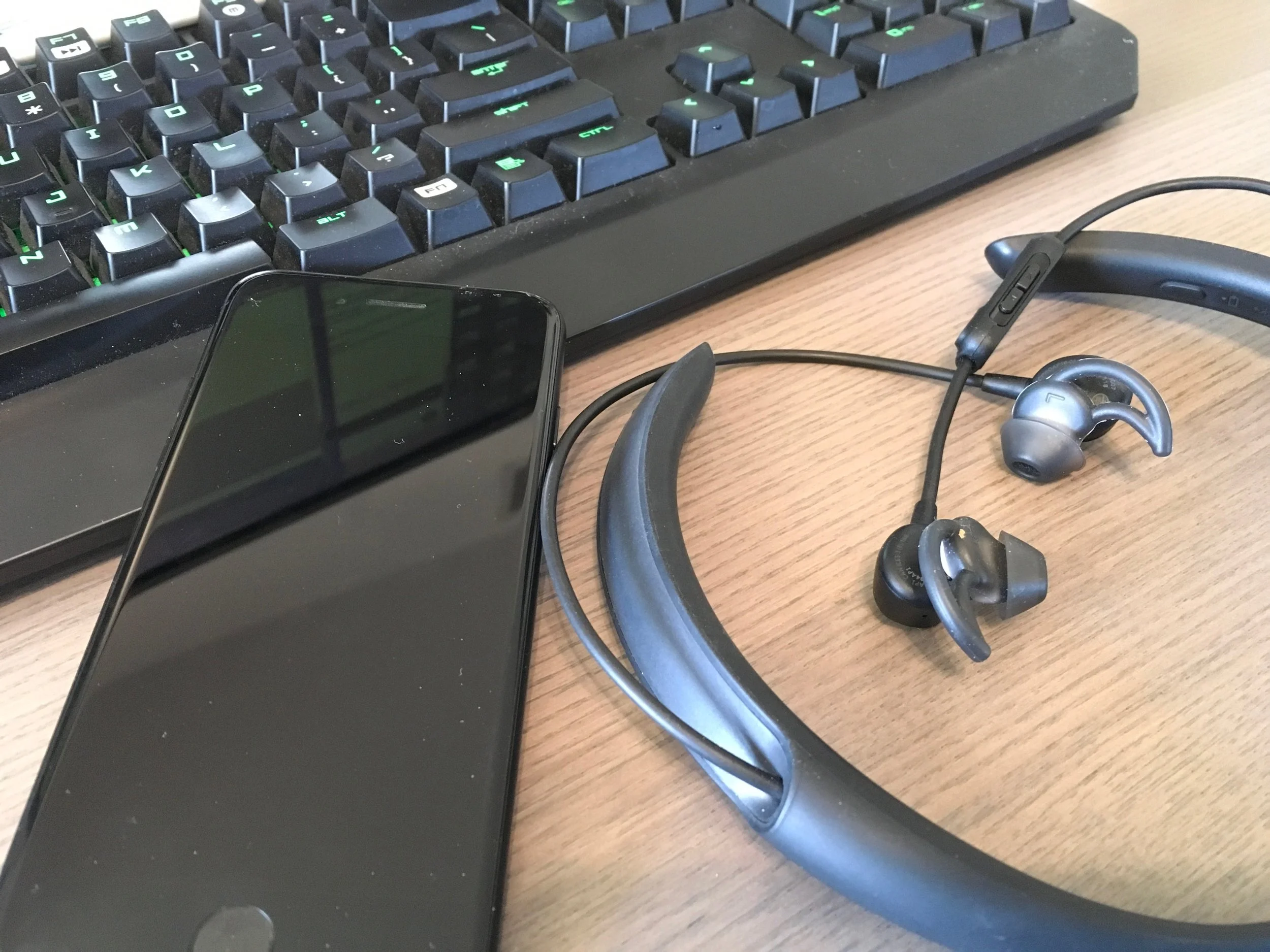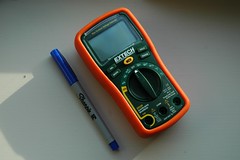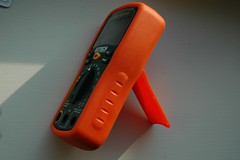Some products are truly innovative, and creates its own genre. The iPhone is one. The Squeezebox, reviewed here, is another.

What is it?
The squeezebox (version 3, white) is a network music streaming device. It stream music from a music server (you supplied, see later) wirelessly or via a wired home network. You normally hook it up to your stereo to play the music. What makes it unique is that it has a flexible digital display. You use the remote and the display to control the device. There is no need for a monitor, keyboard, nor mouse.
What's the other cool stuff about it?
- it serves my Apple Lossless music tagged with Japanese and Chinese names, displayed correctly on the Squeezebox screen.
- It has optical out, which I will use later to get a even better quality audio signal
- Using the IRBlaster plugin and the $7 connector, the Squeezebox remote power my receiver on/off, and adjust its volume.
- Using different plugins, I can display other information on it -- weather, stock quotes, the last is endless
Unboxing
The unit arrives in a cubish box. The items are very packed. The box is designed for easy unboxing -- I love that. The main unit is suspended in foam bookends. The accessories are in a box in the bottom. They kindly included two "finger" holes at the top of the box so that you can pull the box out of the main box easily. Good design number 1. Inside the accessory box, there is a small section that holds the remote. Again, they provided a pull-tab so that you can open that part easily. I am impressed with this company already, and I have not used the actual product yet.
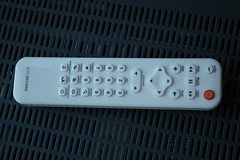
Setting up the Squeezebox
On power-up, the box automatically prompt you thru the setup, starting with network setup. You have to use the remote to answer questions and optionally input things like IP addresses. I always have problem with the DHCP server on my router, and I ended up having to manually enter a static IP for the squeezebox itself. And don't forget, if you have wireless LAN security like MAC filtering, you have to enable the squeezebox on your router first. The MAC address is on the label at the bottom of the unit. The entire setup should only take a few units. Again, this user interface actually works!
Setting up the Music Server
The music server is a piece of software called SlimServer. It is free. You can install and run it on a Mac, a PC, a Linux box, or even some dedicated hardware (see later). Now a little bit about my music setup:
I use an iMac as my primary music machine, meaning I rip my CD using the iMac and play most of my music using iTunes on this iMac. iTunes can stream music to an Apple Airport Express. That's how I play digital music on my main audio system in the living room. I also use the iMac USB output to play music on my vacuum tube headphone amp, but that's another story.
I store all the music files in Apple Lossless format, on a network attached device (NAS) called the ReadyNAS NV+ made by Infrant Technology. They just got bought by NETGEAR. This is a pretty expensive and serious storage device. I run it in X-RAID mode, so that it is unlikely that I will lose any of my music files due to harddrive failure.
Here is the interesting part -- back to the Music Server software SlimServer. It actually runs on this NAS. So I can have the NAS feeding the Squeezebox, without any PC/Mac in between. I tried it. It works, sloooowly. I read on many online forums that this setup is slow. And it is. On top of that, the software version is also a little out of date compare to the PC/Mac based version. At the end, there are three problems with using the SlimServer on the ReadyNAS NV+:
- It is slow (and I have the 1G memory version)
- The software is a few minor version behind
- It is much harder to install plugins, and the number of plugins available is smaller
- I cannot access my iTunes playlist since it is not stored on the NAS
So I tried running SlimServer on my iMac. It is much better. It is faster. Plugins become easy. I can use my iTunes playlist. I switched over to use the Mac version.
Hookup

The squeezebox has a very small external power brick. It comes with a RCA to RCA cable to connect the squeezebox to your stereo using analog signals, which is the must likely scenario. If you want to use optical out to either a independent DAC, or a receiver that has optical input, you have to supply your own cable.

IRBlaster controlling my Receiver
This works amazingly well. I am using a pretty high quality NAD receiver solely for playing the squeezebox music in the bedroom. Out of all the features, I only really need to switch it on and off, and adjust it's volume. Well, using the IRBlaster plugin and the $7 LED emitter plugged into the headphone out, I can have the squeezebox remote controls the receiver directly. When I press power-on on the squeezebox, it will turn on both the squeezebox and the receiver. When I press volume up, it will turn the volume up on the receiver (instead of changing the volume on the squeezebox).
Plugins
This is one of the cool thing you can do with the Squeezebox. You can download and install all sorts of plugins that enhences the use of the device. These are the ones that I use:
IRBlaster
Download it here. It is described in a little detail on the slimdevices wiki. You may need to hunt down the correct IR codes from the LIRC site. It is not very user friendly but it works. Create a directory on your computer and points IRBlaster to it to load the config file.
Somewhere hidden in the documentation, it says that the volume of the squeezebox is set default to 50/100 by IRBlaster. If that is not good enough you can change it by editing the config file and restart slimserver afterwards. For me, the value 50/100 gives me reasonable output volume with my amp, and it won't play too loud which is fine for for my bedroom system.
WeatherTime
The other plugin that I use is WeatherTime. It display current and forcasted weather as well as date and time on the squeezebox. It uses weather.com, and you have to go thru a little configuration, but it is worth it. You can see the screenshots and download it from its website. This replaces the simple date/time display screensaver for me when the squeezebox is off.
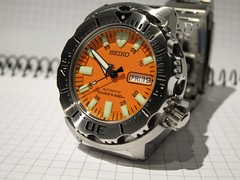 The Weight -- this thing is heavy! It is several times heavier than the G-shocks. It bothered me for about five minutes, and then I don't feel it anymore. In fact I like the weight now. Because of the weight I wear it a little tighter than I wear the G-shocks, and it actually feel good. It feels like part of my arm now.
The Weight -- this thing is heavy! It is several times heavier than the G-shocks. It bothered me for about five minutes, and then I don't feel it anymore. In fact I like the weight now. Because of the weight I wear it a little tighter than I wear the G-shocks, and it actually feel good. It feels like part of my arm now.



